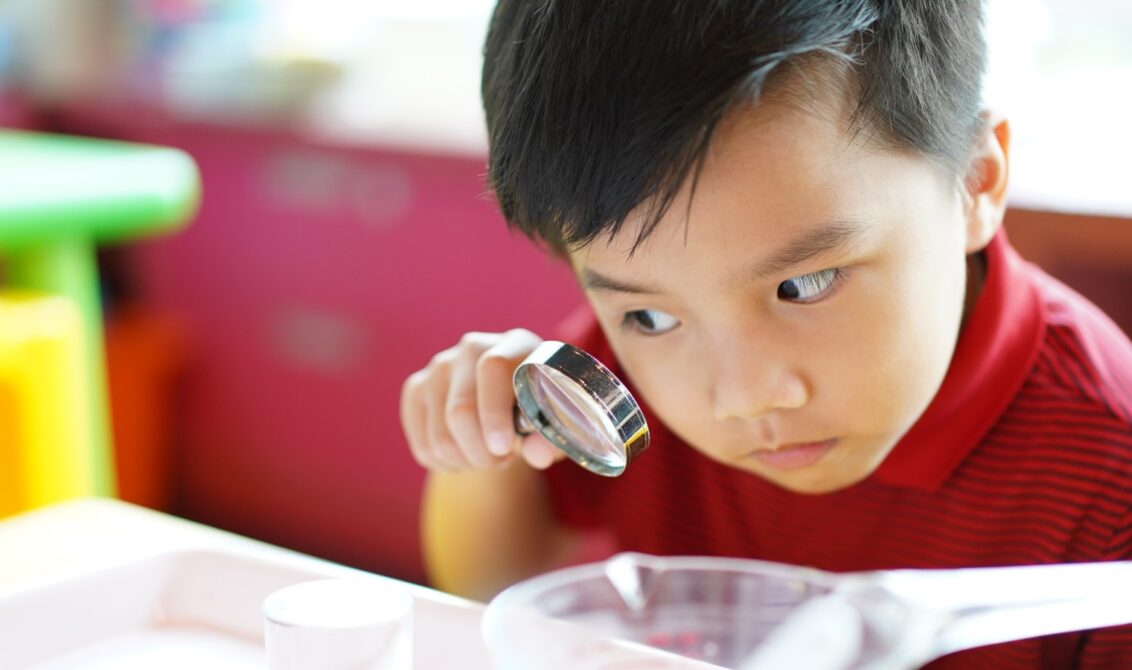
STEM in schools is a great way of developing students’ transferable skills, especially at an early age. Even at the age of 3, children are able to think critically and problem solve, and hone these abilities through practice.
STEM projects are opportunities for children to learn through experimenting. Often, these activities involve trial and error, which is a great way for students to build resilience and a growth mindset by embracing challenges and seeing that failure is part of the learning process.
What’s more, STEM in schools allows teachers to nurture innovative thinking and creative exploration, as children learn outside the box and come up with unique solutions to problems. And as they work together to problem solve, they’re also laying the foundations for strong communication and collaboration skills.
So, here are some STEM project ideas that will give your youngest students an engaging learning experience:
1. Colour mixing
This classroom activity is a hands-on way for children to explore the colour wheel and discover how colours combine. Set up various stations around your classroom where students can experiment mixing paints or other colour mixing materials. Encourage them to mix different colours and help them to observe and record the results.
As your students mix up the different shades of paint with their brushes, they’ll develop their artistic skills while also learning about how colours interact. This activity also fosters creativity and critical thinking – but it can get messy, so engage as many adult classroom helpers as you can!
2. Sink or float
Sink or float is an interactive and memorable way for your students to explore basic principles of physics, and doesn’t require much preparation. Simply set up a basin of water in the middle of your classroom, then gather an assortment of everyday objects (a pencil, a feather, a cup, a stone, a stick, a piece of paper, an apple, etc). Invite your students to examine the objects and talk together about whether or not the objects will sink or float.
Then, it’s time to start experimenting! Ask your students to drop the objects in the water one by one, and compare their predictions to the results. It’s a good way to introduce them to the scientific principle of hypothesis testing, all while learning about buoyancy and water displacement through discovery.
3. Scavenger hunt
This activity gets your students out of the classroom and into the natural world! Split your learners into teams and give them a list of objects to find (pre-reading, use photographs) in the playground or local park. It can be as general (leaves, rocks, sticks) or as specific (oak leaf, acorn, etc) as you like. Your students will enjoy exploring their surroundings and working together to find all the objects on the list.
This activity is a good one for teamwork and collaboration, so group your students strategically. It’s an opportunity for children who don’t spend time together socially to communicate and problem-solve, while building social bonds in the process.
4. Nature patterns
A good follow up to your scavenger hunt, this activity encourages your students to use natural materials such as sticks, flowers, stones and leaves to create patterns and designs on paper. Through the process, your students will explore the natural textures, shapes and colours of their materials. And, by creating patterns with the material, they’ll be exploring design principles like symmetry, repetition and balance.
This activity encourages fine motor skills, creativity and an appreciation for the beauty of nature. Even better, you’ll be able to decorate your classroom walls with the results, and build your students’ self esteem by putting their work on display.
5. Magnetic exploration
Another physics-based STEM activity, young learners will love exploring the principles of magnetic attraction. Set up different stations around the classroom with a variety of magnets and materials which your students can use to experiment with. Like previous activities, this one is a good opportunity for students to make and test hypotheses as they guess which objects and materials are attracted to magnets, and then see if they are right or not.
This interactive exploration encourages critical thinking and builds fine motor skills as children manipulate objects and magnets of different sizes and learn about magnetic properties, polarity and attraction. It’s also a good opportunity for students to practise scientific thinking through experimentation and testing hypotheses.
6. Seed germination
This long-term classroom project introduces young learners to the wonders of plant life as they watch seeds transform into seedlings and grow into plants. They’ll develop an understanding of the life cycle of plants, and the factors necessary for growth: water, light and nutrients.
Seed germination encourages critical thinking and data analysis skills, as students record data, measure growth and create visual representations of their findings. It also nurtures a sense of responsibility as students care for their seedlings, making sure that they have enough water and light to thrive.
7. Classroom caterpillar
The Very Hungry Caterpillar is a storybook classic for a reason – the life cycle of a caterpillar is a fascinating process. So, having a caterpillar in the classroom has lots of STEM benefits for young learners. They can observe and document the different stages of metamorphosis, from caterpillar to cocoon to butterfly.
There are also lots of opportunities for interdisciplinary learning. Students can connect science, maths and art by exploring the symmetry of butterfly wings and creating their own butterfly designs.
Having a classroom caterpillar also helps young learners to take on the role of caretaker, and promotes empathy and responsibility as they learn about the caterpillar’s needs and preferences in terms of food and habitat. It will help them develop an appreciation of the natural world – and a sense of wonder when the caterpillar transforms into a butterfly!
Further reading
Learn more about the Pearson Edexcel iPrimary Reception/Early Years curriculum, a 2 year programme which has been developed for children aged 3 to 5. Research shows that effective education at this crucial developmental stage lays the foundations for children to build the skills they’ll need later on.
Subscribe to our blog
If you’d like to stay up to date with our latest articles, why not subscribe to our blog? You’ll get a fortnightly roundup of the articles you’ve missed straight to your inbox, plus links to free teaching resources.

